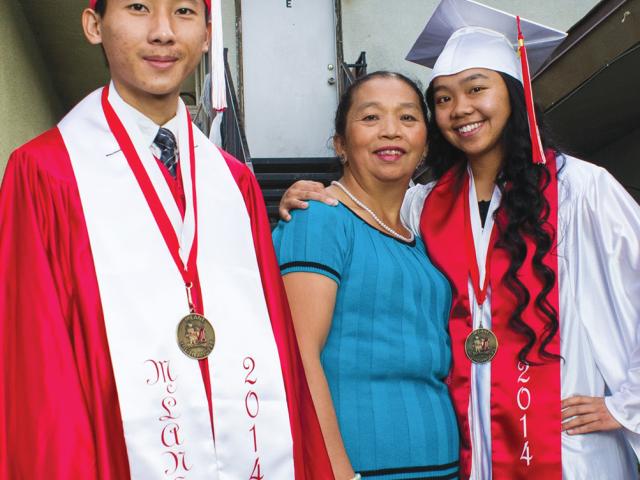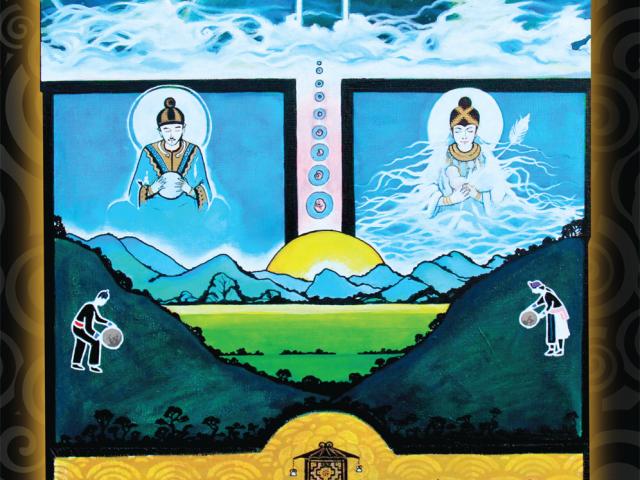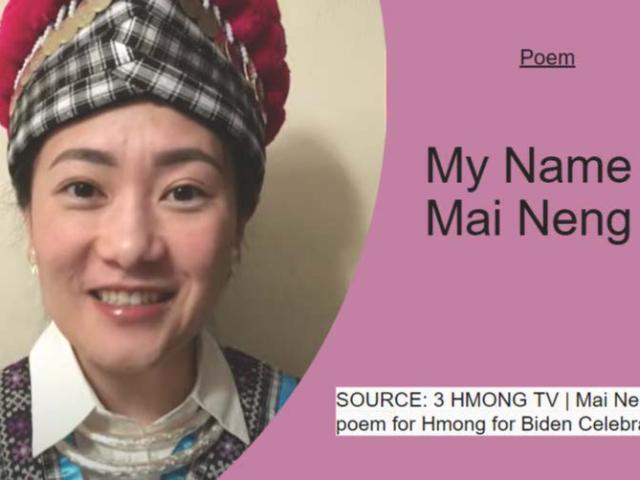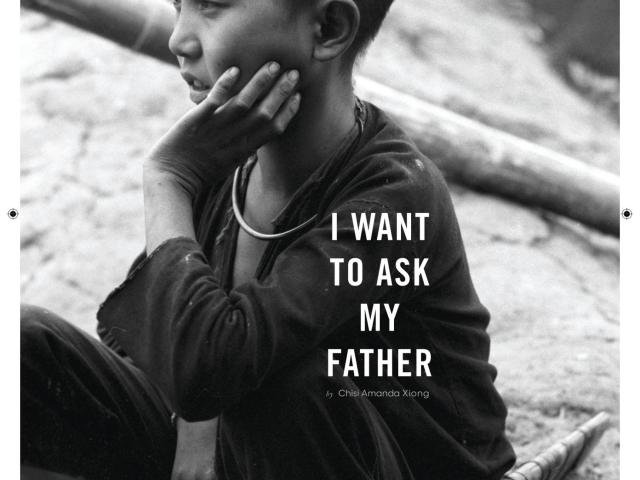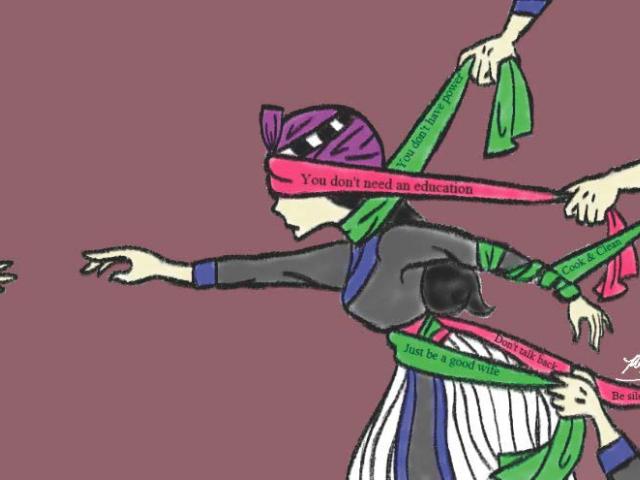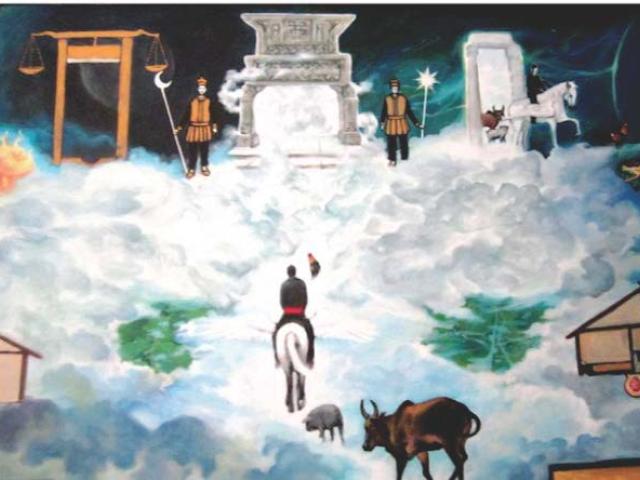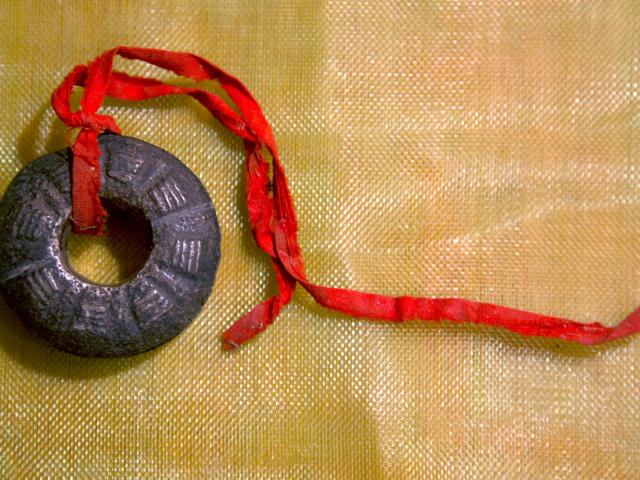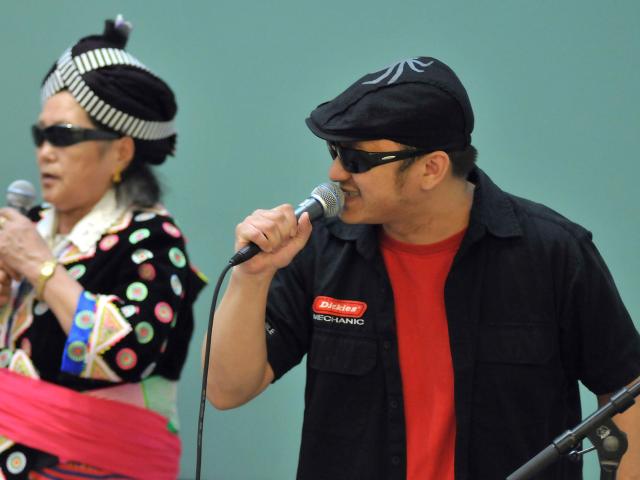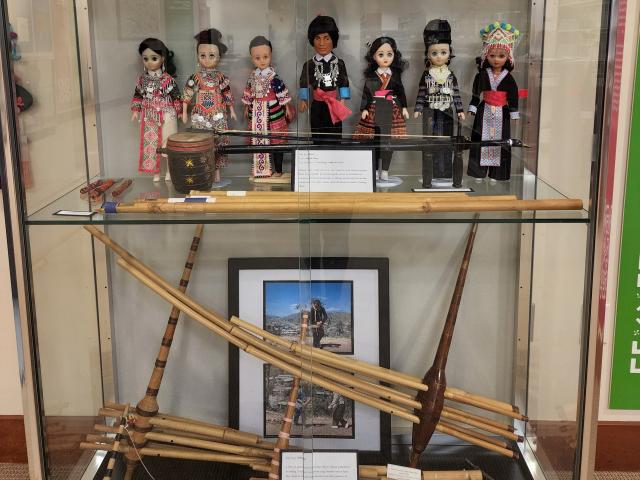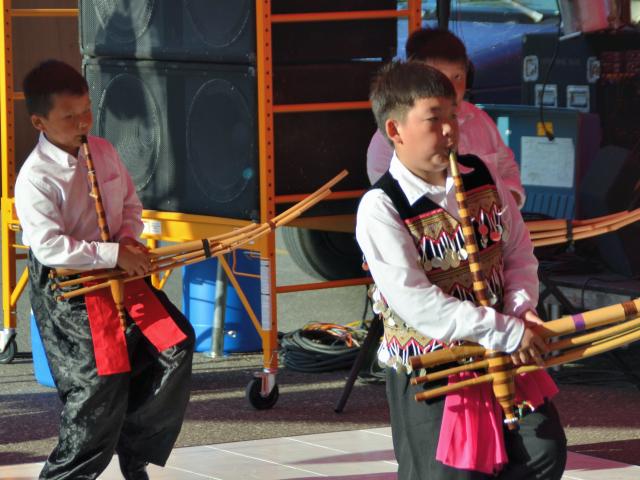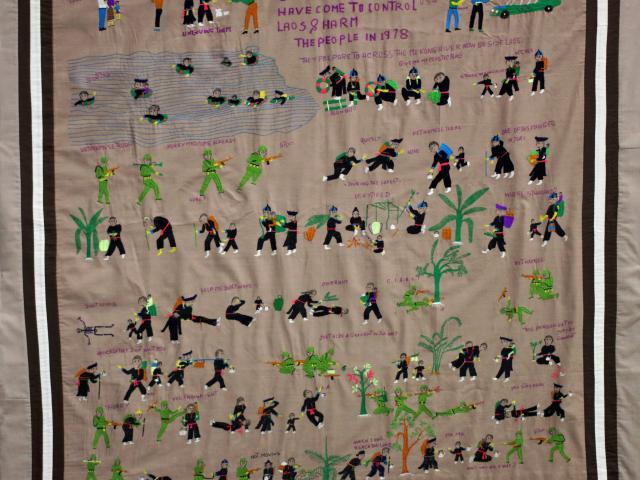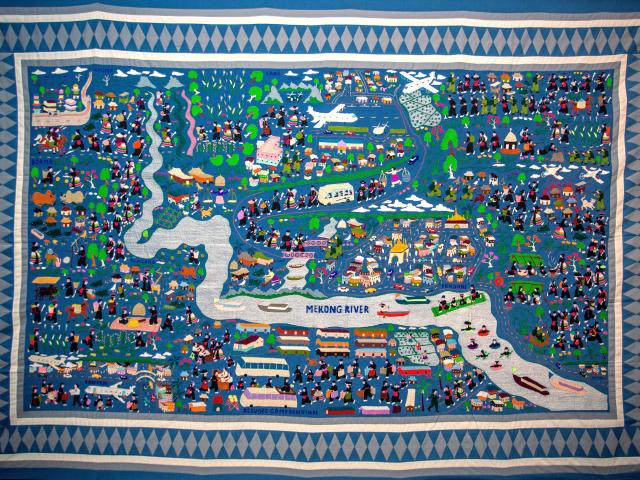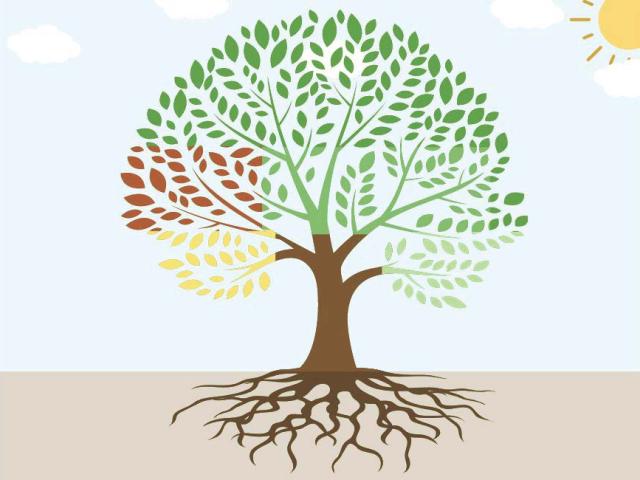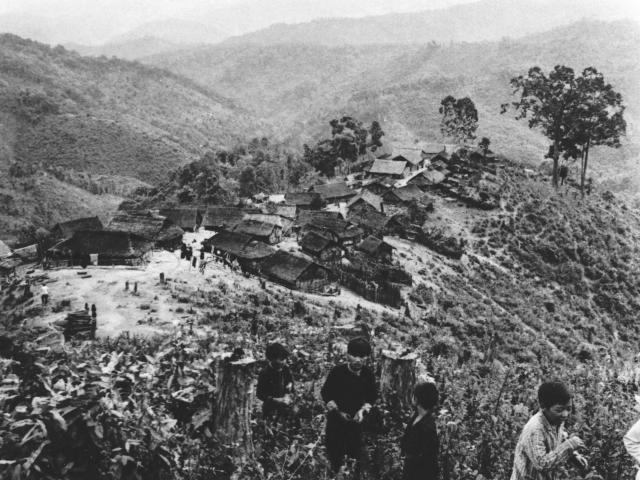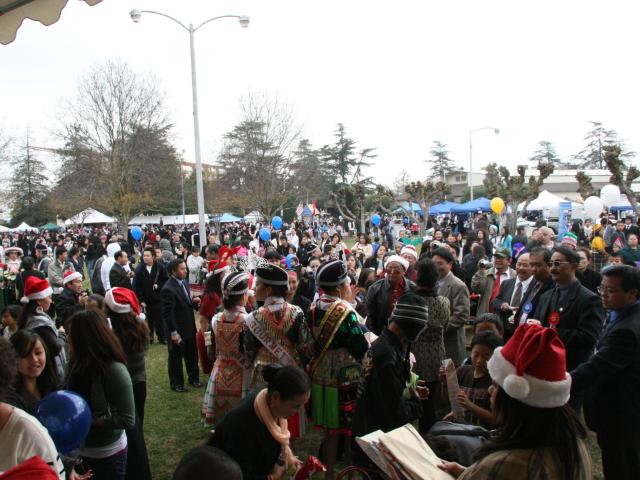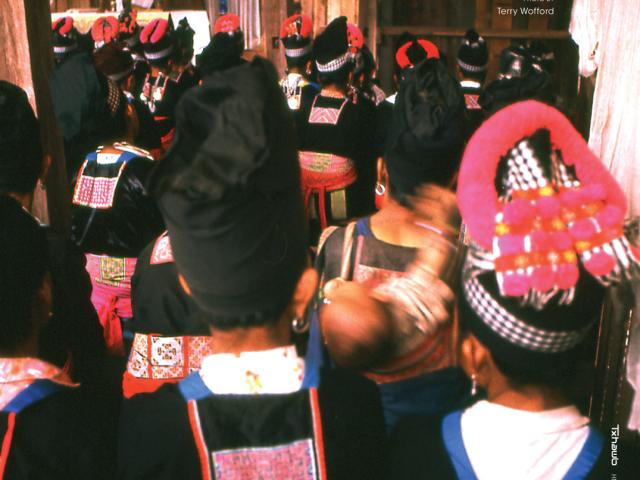Area of Study 1: Hmong Ways of Knowing

Description of Artwork: The Hmong practice an oral culture, passing down their history, knowledge, stories, and art from one generation to the next through oral teachings and storytelling. Traditionally, Hmong elders (such as this grandpa and grandma who are also cultural bearers) would gather their children and friends to share folklore or life experiences. You will notice the clothes the Hmong children are wearing and the items they are holding all resemble some of the future hopes that their grandparents and parents have for their children. Image credit goes to Boon Ma Yang created specifically for the Hmong History and Cultural Studies Model Curriculum.
Introduction to the Hmong History and Cultural Studies Model Curriculum
This narrative serves as an introduction for teachers interested in teaching Hmong history and cultural studies. It is crucial for teachers not only to understand the materials themselves, but also to comprehend their perceptions of people who are Hmong, their experiences, histories, and communities.
HMoob Ways of Knowing
This area of study narrative delves into the influence of geographical context and historical migrations on HMoob individual and collective identities. It aims to provide educators with valuable insights to better connect with their diverse students and communities. The area of study encompasses model lessons that cover complex topics such as identity, belonging, and resistance to oppression.
Hmong Spirituality and Cultural Ceremonies
Modern-day technology and social media, such as online videos, allow community members to collect and share Hmong oral histories and connect to cultural heritage on a global scale. Before the advent of online and digital technologies, however, one would have to sit down in person with an elder to access the rich accounts of oral history in Hmong cultures.
